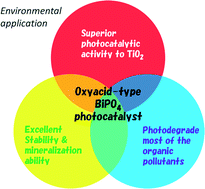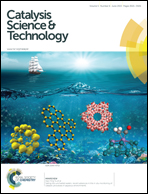A review of BiPO4, a highly efficient oxyacid-type photocatalyst, used for environmental applications
Abstract
Semiconductor photocatalysts used for environmental applications have attracted a lot of attention due to their ability to completely convert pollutants into CO2 and H2O. For a simple and economical treatment, more efficient photocatalysts are highly desired compared to widely used TiO2. A non-metallic oxyacid type photocatalyst, BiPO4, was first discovered by the author's group and is now commonly accepted as a superior photocatalyst compared to TiO2 in the UV region. Because of its excellence, this paper has reviewed the recent progress on BiPO4, specifically on the efforts from the author's group, including the preparation as well as the modification methods involved in activity enhancement. The description of the physical properties and typical degradation pathways of the photocatalyst are also given for better comprehension of the origin of its high activity. Furthermore, as a represented non-metallic oxyacid photocatalyst, research into BiPO4 will offer guidelines for designing effective photocatalysts of the same type for environmental applications.


 Please wait while we load your content...
Please wait while we load your content...